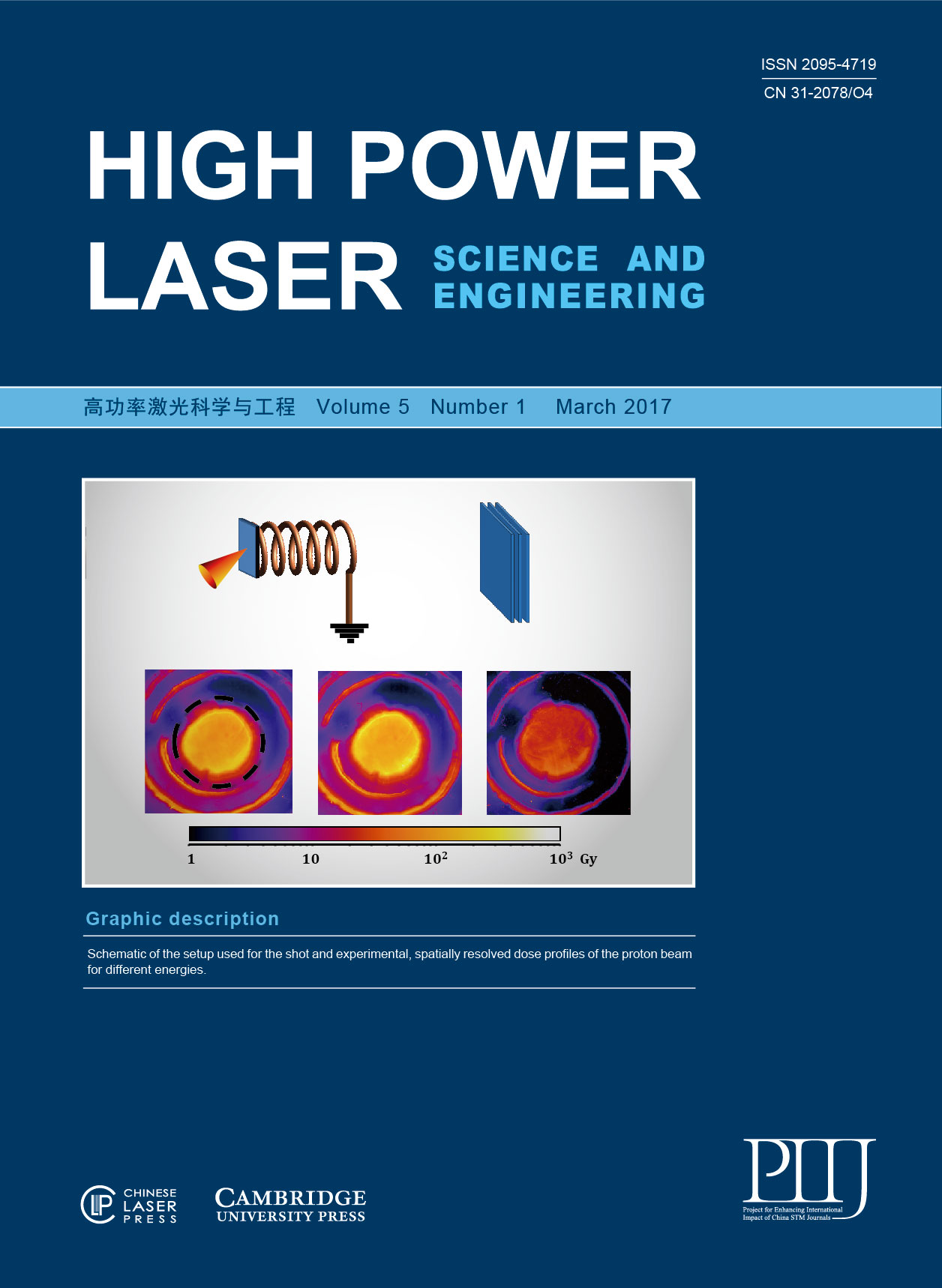 View fulltext
View fulltext
This work presents a brief introduction on three kinds of newly developed $\text{Nd}^{3+}$-doped laser glasses in Shanghai Institute of Optics and Fine Mechanics (SIOM), China. Two $\text{Nd}^{3+}$-doped phosphate glasses with lower thermal expansion coefficient and thermal shock resistance 4 times higher than that of N31 glass are developed for laser processing. Nd:Silicate and Nd:Aluminate glasses with peak emission wavelength at 1061 and 1065 nm, effective emission bandwidth of 34 and 50 nm, respectively, are developed for Exawatt-class laser system application. Fluorophosphate glasses with low nonlinear refractive index ($n_{2}=0.6{-}0.86$) and long fluorescence lifetime ($430{-}510~\unicode[STIX]{x03BC}\text{s}$) are investigated for the purpose of decreasing B integral in high-power laser system. The properties of all these glasses are presented and compared with those of commercial neodymium laser glasses.
The Laboratory for Intense Lasers (L2I) is a research centre in optics and lasers dedicated to experimental research in high intensity laser science and technology and laser plasma interaction. Currently the laboratory is undergoing an upgrade with the goal of increasing the versatility of the laser systems available to the users, as well as increasing the pulse repetition rate. In this paper we review the current status of the laser research and development programme of this facility, namely the upgraded capability and the recent progress towards the installation of an ultrashort, diode-pumped OPCPA laser system.














